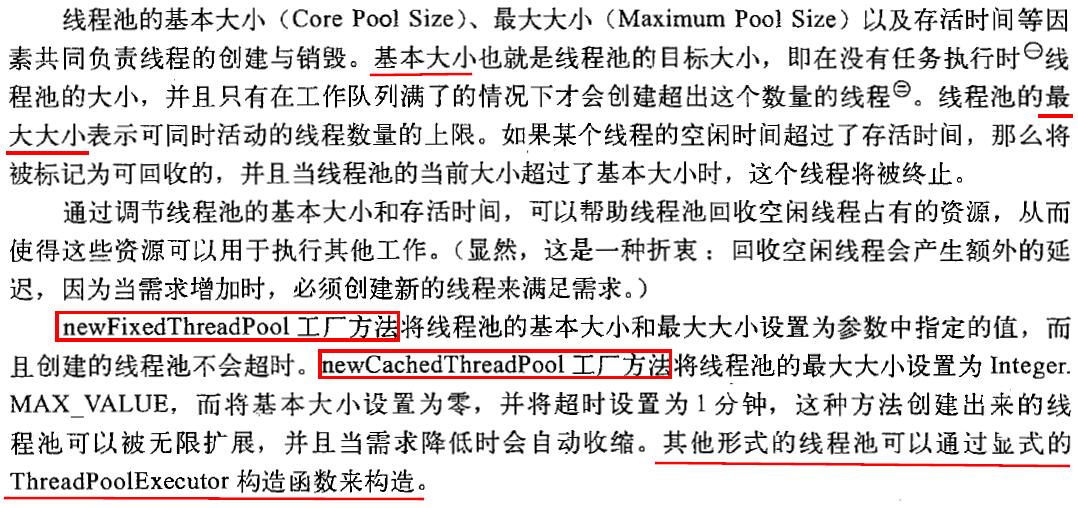
上文提到可以通过显式的ThreadPoolExecutor构造函数来构造特定形式的线程池,ThreadPoolExecutor是java.util.concurrent包以内部线程池的形式对外提供线程池管理、线程调度等服务,此处我们来了解一下ThreadPoolExecutor
ExecutorService exec = new ThreadPoolExecutor(8, 8, 0L, TimeUnit.MILLISECONDS, new LinkedBlockingQueue<Runnable>(100), new ThreadPoolExecutor.CallerRunsPolicy());
/** * Creates a new {@code ThreadPoolExecutor} with the given initial * parameters, the default thread factory and the default rejected * execution handler. * * <p>It may be more convenient to use one of the {@link Executors} * factory methods instead of this general purpose constructor. * * @param corePoolSize the number of threads to keep in the pool, even * if they are idle, unless {@code allowCoreThreadTimeOut} is set * @param maximumPoolSize the maximum number of threads to allow in the * pool * @param keepAliveTime when the number of threads is greater than * the core, this is the maximum time that excess idle threads * will wait for new tasks before terminating. * @param unit the time unit for the {@code keepAliveTime} argument * @param workQueue the queue to use for holding tasks before they are * executed. This queue will hold only the {@code Runnable} * tasks submitted by the {@code execute} method. * @throws IllegalArgumentException if one of the following holds:<br> * {@code corePoolSize < 0}<br> * {@code keepAliveTime < 0}<br> * {@code maximumPoolSize <= 0}<br> * {@code maximumPoolSize < corePoolSize} * @throws NullPointerException if {@code workQueue} is null */ public ThreadPoolExecutor(int corePoolSize, int maximumPoolSize, long keepAliveTime, TimeUnit unit, BlockingQueue<Runnable> workQueue) { this(corePoolSize, maximumPoolSize, keepAliveTime, unit, workQueue, Executors.defaultThreadFactory(), defaultHandler); } /** * Creates a new {@code ThreadPoolExecutor} with the given initial * parameters and {@linkplain ThreadPoolExecutor.AbortPolicy * default rejected execution handler}. * * @param corePoolSize the number of threads to keep in the pool, even * if they are idle, unless {@code allowCoreThreadTimeOut} is set * @param maximumPoolSize the maximum number of threads to allow in the * pool * @param keepAliveTime when the number of threads is greater than * the core, this is the maximum time that excess idle threads * will wait for new tasks before terminating. * @param unit the time unit for the {@code keepAliveTime} argument * @param workQueue the queue to use for holding tasks before they are * executed. This queue will hold only the {@code Runnable} * tasks submitted by the {@code execute} method. * @param threadFactory the factory to use when the executor * creates a new thread * @throws IllegalArgumentException if one of the following holds:<br> * {@code corePoolSize < 0}<br> * {@code keepAliveTime < 0}<br> * {@code maximumPoolSize <= 0}<br> * {@code maximumPoolSize < corePoolSize} * @throws NullPointerException if {@code workQueue} * or {@code threadFactory} is null */ public ThreadPoolExecutor(int corePoolSize, int maximumPoolSize, long keepAliveTime, TimeUnit unit, BlockingQueue<Runnable> workQueue, ThreadFactory threadFactory) { this(corePoolSize, maximumPoolSize, keepAliveTime, unit, workQueue, threadFactory, defaultHandler); } /** * Creates a new {@code ThreadPoolExecutor} with the given initial * parameters and * {@linkplain Executors#defaultThreadFactory default thread factory}. * * @param corePoolSize the number of threads to keep in the pool, even * if they are idle, unless {@code allowCoreThreadTimeOut} is set * @param maximumPoolSize the maximum number of threads to allow in the * pool * @param keepAliveTime when the number of threads is greater than * the core, this is the maximum time that excess idle threads * will wait for new tasks before terminating. * @param unit the time unit for the {@code keepAliveTime} argument * @param workQueue the queue to use for holding tasks before they are * executed. This queue will hold only the {@code Runnable} * tasks submitted by the {@code execute} method. * @param handler the handler to use when execution is blocked * because the thread bounds and queue capacities are reached * @throws IllegalArgumentException if one of the following holds:<br> * {@code corePoolSize < 0}<br> * {@code keepAliveTime < 0}<br> * {@code maximumPoolSize <= 0}<br> * {@code maximumPoolSize < corePoolSize} * @throws NullPointerException if {@code workQueue} * or {@code handler} is null */ public ThreadPoolExecutor(int corePoolSize, int maximumPoolSize, long keepAliveTime, TimeUnit unit, BlockingQueue<Runnable> workQueue, RejectedExecutionHandler handler) { this(corePoolSize, maximumPoolSize, keepAliveTime, unit, workQueue, Executors.defaultThreadFactory(), handler); } /** * Creates a new {@code ThreadPoolExecutor} with the given initial * parameters. * * @param corePoolSize the number of threads to keep in the pool, even * if they are idle, unless {@code allowCoreThreadTimeOut} is set * @param maximumPoolSize the maximum number of threads to allow in the * pool * @param keepAliveTime when the number of threads is greater than * the core, this is the maximum time that excess idle threads * will wait for new tasks before terminating. * @param unit the time unit for the {@code keepAliveTime} argument * @param workQueue the queue to use for holding tasks before they are * executed. This queue will hold only the {@code Runnable} * tasks submitted by the {@code execute} method. * @param threadFactory the factory to use when the executor * creates a new thread * @param handler the handler to use when execution is blocked * because the thread bounds and queue capacities are reached * @throws IllegalArgumentException if one of the following holds:<br> * {@code corePoolSize < 0}<br> * {@code keepAliveTime < 0}<br> * {@code maximumPoolSize <= 0}<br> * {@code maximumPoolSize < corePoolSize} * @throws NullPointerException if {@code workQueue} * or {@code threadFactory} or {@code handler} is null */ public ThreadPoolExecutor(int corePoolSize, int maximumPoolSize, long keepAliveTime, TimeUnit unit, BlockingQueue<Runnable> workQueue, ThreadFactory threadFactory, RejectedExecutionHandler handler) { if (corePoolSize < 0 || maximumPoolSize <= 0 || maximumPoolSize < corePoolSize || keepAliveTime < 0) throw new IllegalArgumentException(); if (workQueue == null || threadFactory == null || handler == null) throw new NullPointerException(); this.corePoolSize = corePoolSize; this.maximumPoolSize = maximumPoolSize; this.workQueue = workQueue; this.keepAliveTime = unit.toNanos(keepAliveTime); this.threadFactory = threadFactory; this.handler = handler; }
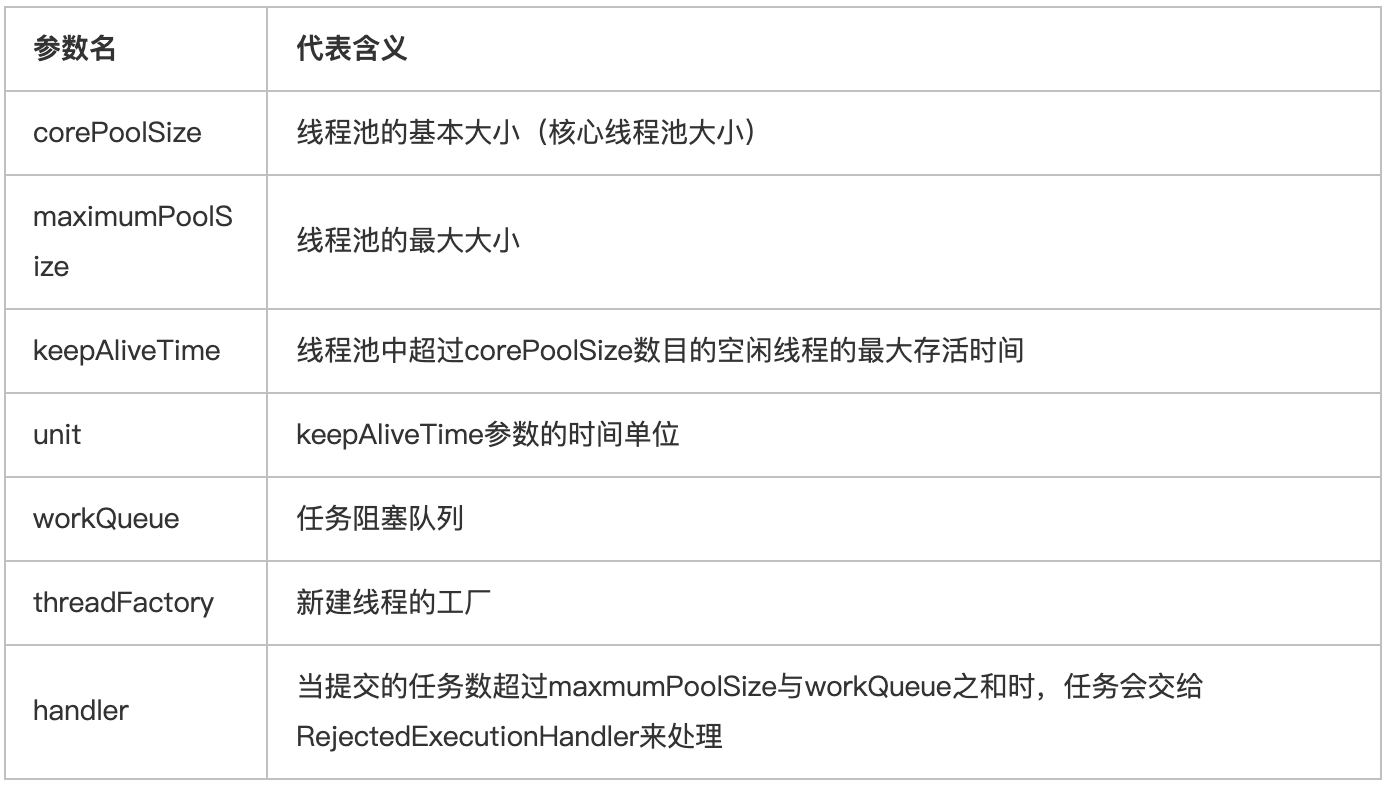
进一步解说:
A、当提交新任务时,若线程池大小小于corePoolSize,将创建一个新的线程来执行任务,即使此时线程池中存在空闲线程;
B、当提交新任务时,若线程池达到corePoolSize大小,新提交的任务将被放入workQueue中,等待线程池调度执行;
C、当提交新任务时,若workQueue已满,且maximumPoolSize>corePoolSize,将创建新的线程来执行任务;
D、当提交新任务时,若任务总数超过maximumPoolSize,新提交的任务将由RejectedExecutionHandler来处理;
E、当线程池中的线程数超过corePoolSize时,若线程的空闲时间达到keepAliveTime,则关闭空闲线程
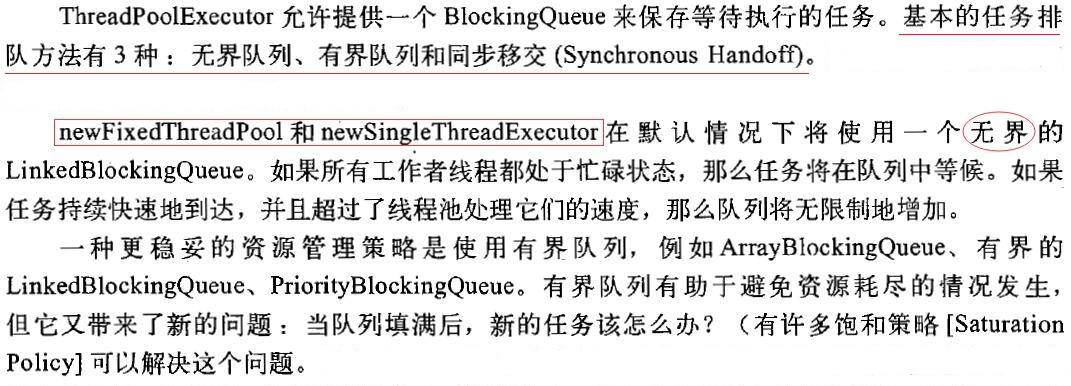

Note:
同步队列 SynchronousQueue最多只有一个元素


示例(摘自网络):
import java.util.concurrent.ArrayBlockingQueue; import java.util.concurrent.ExecutorService; import java.util.concurrent.RejectedExecutionHandler; import java.util.concurrent.ThreadFactory; import java.util.concurrent.ThreadPoolExecutor; import java.util.concurrent.TimeUnit; import java.util.concurrent.atomic.AtomicInteger; public class CustomThreadPoolExecutor { private ThreadPoolExecutor pool = null; /** * 线程池初始化方法 * * corePoolSize 核心线程池大小----10 * maximumPoolSize 最大线程池大小----30 * keepAliveTime 线程池中超过corePoolSize数目的空闲线程最大存活时间----30+单位TimeUnit * TimeUnit keepAliveTime时间单位----TimeUnit.MINUTES * workQueue 阻塞队列----new ArrayBlockingQueue<Runnable>(10)====10容量的阻塞队列 * threadFactory 新建线程工厂----new CustomThreadFactory()====定制的线程工厂 * rejectedExecutionHandler 当提交任务数超过maxmumPoolSize+workQueue之和时, * 即当提交第41个任务时(前面线程都没有执行完,此测试方法中用sleep(100)), * 任务会交给RejectedExecutionHandler来处理 */ public void init() { pool = new ThreadPoolExecutor( 10, 30, 30, TimeUnit.MINUTES, new ArrayBlockingQueue<Runnable>(10), new CustomThreadFactory(),new CustomRejectedExecutionHandler()); } public void destory() { if(pool != null) { pool.shutdownNow(); } } public ExecutorService getCustomThreadPoolExecutor() { return this.pool; } private class CustomThreadFactory implements ThreadFactory { private AtomicInteger count = new AtomicInteger(0); @Override public Thread newThread(Runnable r) { Thread t = new Thread(r); String threadName = CustomThreadPoolExecutor.class.getSimpleName() + count.addAndGet(1); System.out.println(threadName); t.setName(threadName); return t; } } private class CustomRejectedExecutionHandler implements RejectedExecutionHandler { @Override public void rejectedExecution(Runnable r, ThreadPoolExecutor executor) { // 记录异常 // 报警处理等 System.out.println("error............."); } } // 测试构造的线程池 public static void main(String[] args) { CustomThreadPoolExecutor exec = new CustomThreadPoolExecutor(); // 1.初始化 exec.init(); ExecutorService pool = exec.getCustomThreadPoolExecutor(); for(int i=1; i<100; i++) { System.out.println("提交第" + i + "个任务!"); pool.execute(new Runnable() { @Override public void run() { try { Thread.sleep(300); } catch (InterruptedException e) { e.printStackTrace(); } System.out.println("running====="); } }); } // 2.销毁----此处不能销毁,因为任务没有提交执行完,如果销毁线程池,任务也就无法执行了 // exec.destory(); try { Thread.sleep(10000); } catch (InterruptedException e) { e.printStackTrace(); } } }
解读:
上述代码通过init()方法对ThreadPoolExecutor构造函数进行了一些自定义设置,getCustomThreadPoolExecutor()方法返回init()方法配置的ThreadPoolExecutor对象实例(即线程池引用)
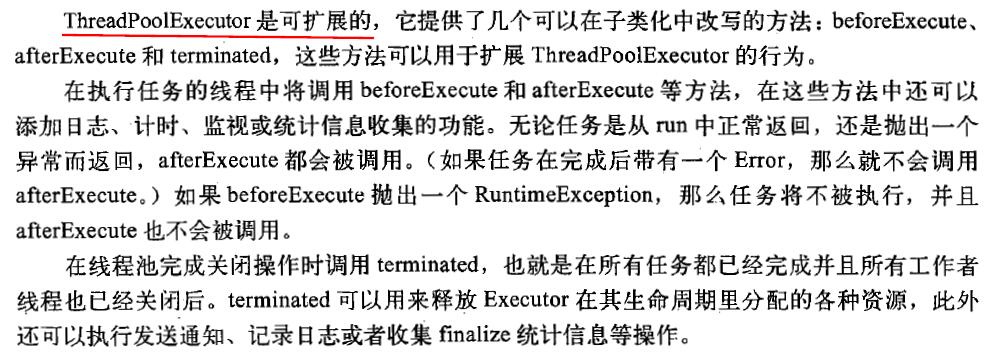
从源码视角分析Executors、ThreadPoolExecutor、ExecuteService、Executor之间的关系
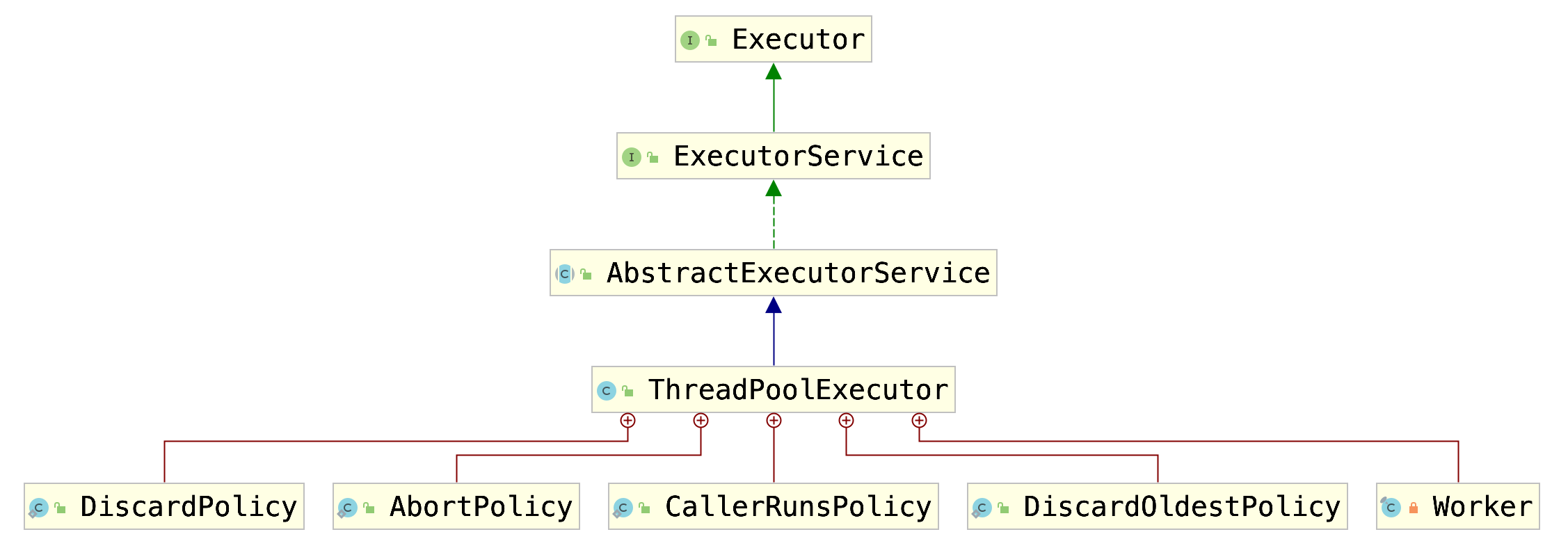
从Java5开始新增了Executors类,它有几个静态工厂方法用来创建线程池,这些静态工厂方法返回一个ExecutorService类型的值,此值即为线程池的引用。
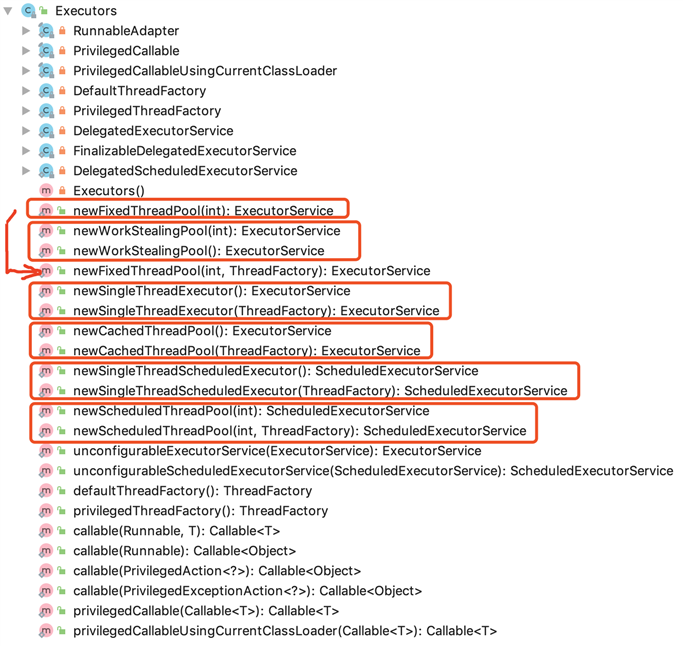
Executor是一个接口,里面只有一个方法
public interface Executor { void execute(Runnable command); }
ExecuteService也是一个接口,其定义如下:
public interface ExecutorService extends Executor {...}
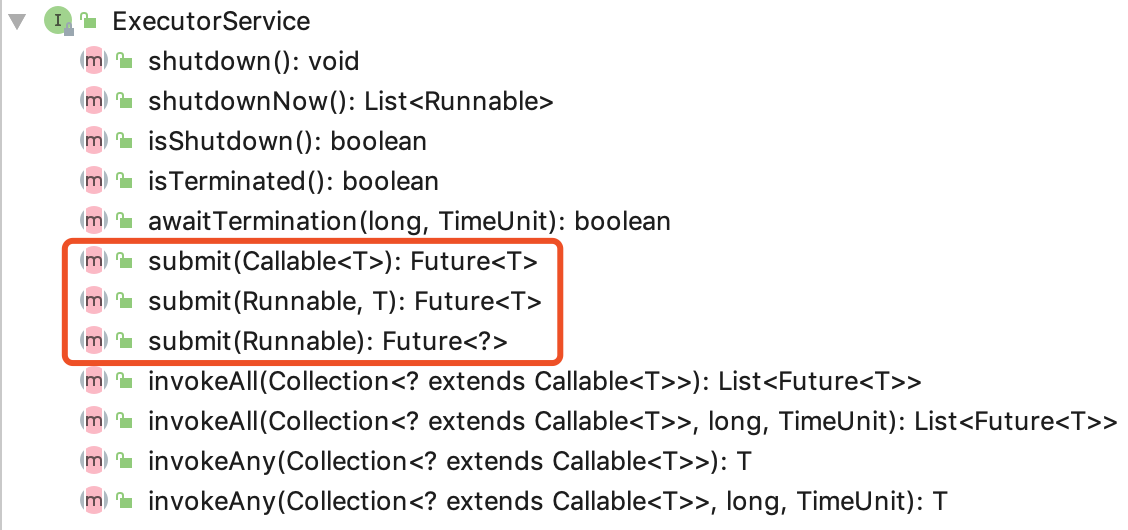
继承AbstractExecutorService,AbstractExecutorService实现ExecutorService接口
public class ThreadPoolExecutor extends AbstractExecutorService {...}
public abstract class AbstractExecutorService implements ExecutorService {...}
在本文最开始的那个示例中,有一句代码,如下:
executor.shutdown();
该语句并不是终止线程的运行,而是禁止在这个executor中添加新的任务,下文描述了该语句对于ExecutorService的意义。
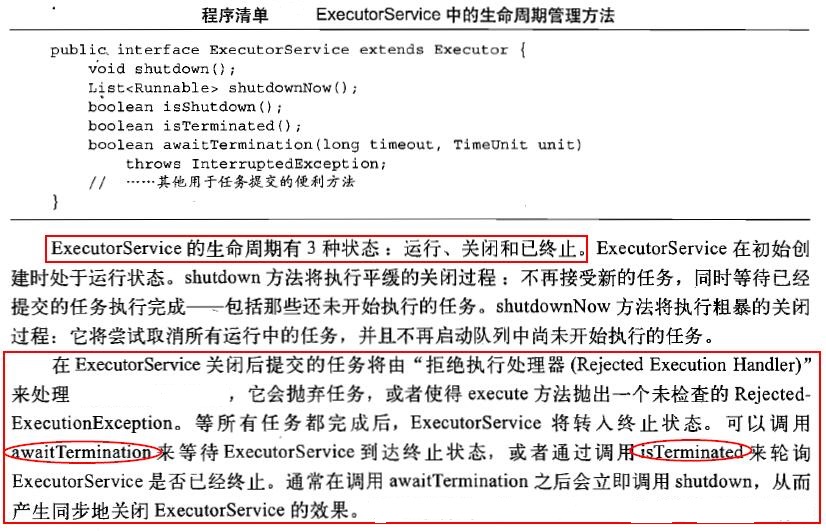
上文提到ThreadPoolExecutor构造函数的RejectedExecutionHandler handler参数,该参数表示当提交的任务数超过maxmumPoolSize与workQueue之和时,任务会交给RejectedExecutionHandler来处理,此处我们来具体了解一下
(1)四种饱和策略
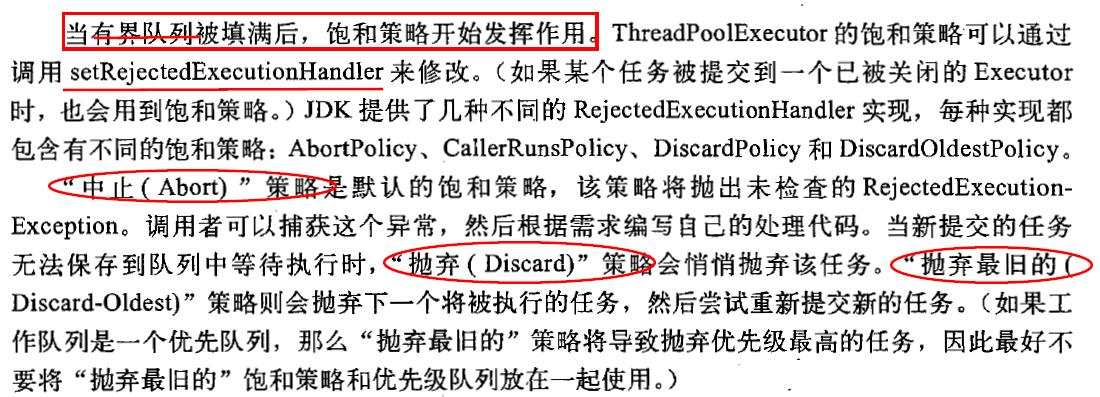
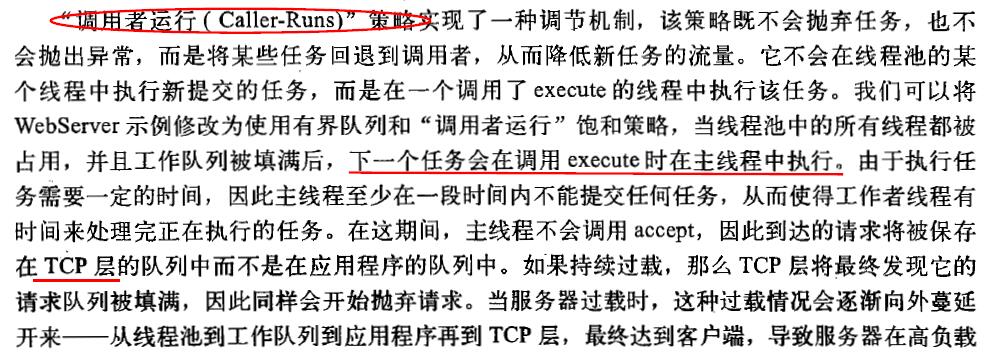

(2)源码分析:
RejectedExecutionHandler这个接口是用来处理被丢弃的线程的异常处理接口,其源码如下:
public interface RejectedExecutionHandler{ //被线程池丢弃的线程处理机制 public void rejectedExecution(Runnable r, ThreadPoolExecutor executor) ; }
AbortPolicy(中止策略)继承RejectedExecutionHandler接口,其源码如下:
public static class AbortPolicy implements RejectedExecutionHandler{ public AbortPolicy(){} //直接抛出异常 public void rejectedExecution(Runnable r, ThreadPoolExecutor executor) { throw new RejectedExecutionException("Task"+r.toString()+"rejected from"+executor.toString()); } }
我们可以自己实现RejectedExecutionHandler接口,将实现类作为线程丢弃处理类,代码如下:
package com.test; import java.util.concurrent.RejectedExecutionHandler; import java.util.concurrent.ThreadPoolExecutor; public class RejectedExecutionHandlerDemo implements RejectedExecutionHandler{ @Override public void rejectedExecution(Runnable r, ThreadPoolExecutor executor) { // TODO Auto-generated method stub System.out.println("线程信息"+r.toString()+"被遗弃的线程池:"+executor.toString()); } }
原文:https://www.cnblogs.com/studyLog-share/p/15149761.html